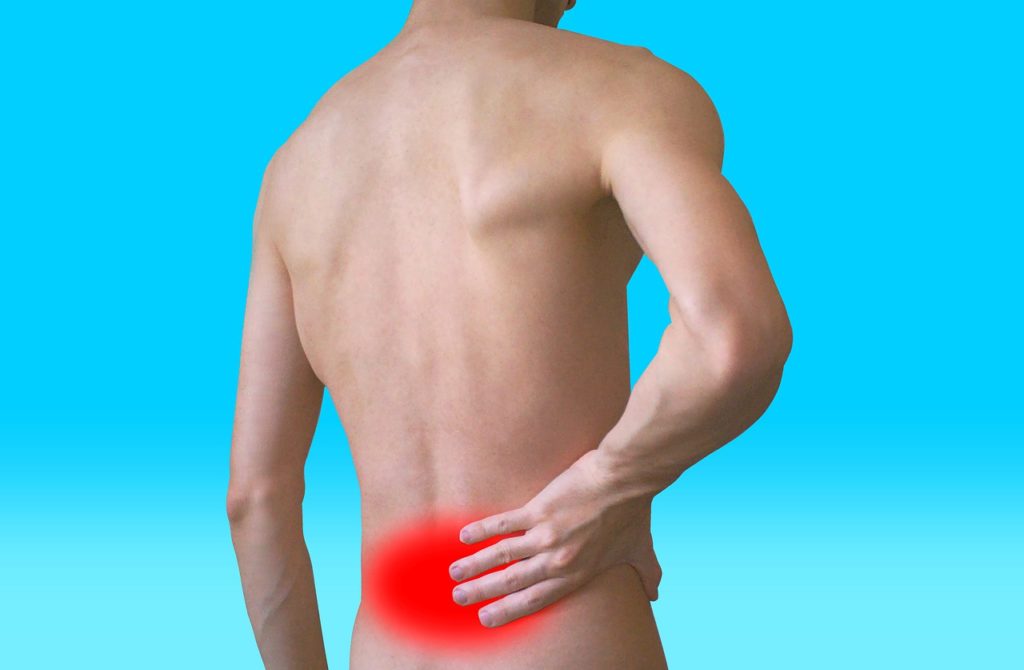Sciatica pain is debilitating and chronic. Suffers look for any way to relieve the pain and promote healing. Transcutaneous Electrical Nerve Stimulation (TENS) is an effective, affordable pain relief option for those with sciatic pain.
In this article, we will help you to understand the correct TENS unit placement for sciatica treatment, whether you are using a TENS unit at home, at the office, when traveling, or in a professional therapy session.
TENS Unit Placement for Sciatica

Sciatica pain is often located in the site of origin (lower back, just above the buttocks) and can radiate through the buttock region and down the leg.
In some cases, sciatica pain can affect the ankle area as well.
For immediate relief of sciatica pain, the TENS unit electrode pads can be placed in key positions to maximum pain relief through the electrical pulse current emitted between two or more TENS electrodes.
Typically, sciatic nerve pain responds best when TENS pads are placed on the skin at the upper and lower reaches of the area of pain. That is, both on the lower back and the upper (thigh) leg area.
By using pads in sets of two, the entire area of radiating sciatica pain is covered using this placement recommendation.
There will be a pad at the top end of the area of back pain, as well as the lower end of the same pain area.
This upper and lower pain boundary pattern is repeated for any leg pain area as well, simultaneously.
In instances where the sciatic pain is intense in one location (likely in the lower back region), placing the electrode pads directly on the site of the pain can also be effective.
Note that the TENS pads are only effective when the electrical current is passed between two pads. But some TENS units have individual adhesive pads with two electrode sensors contained within one pad.
For most TENS units with multiple pads (some have up to 10 – 12 pads which can be individually placed), two pads can be placed in the immediate region of the central pain point for targeted relief.
What is a TENS unit?
A TENS unit sends low-voltage electrical pulse currents through one’s skin in order to stimulate the nerve endings. The goal is to promote the natural release of endorphins (a painkiller produced by our bodies) and to divert brain attention away from the detection of sciatic pain awareness.
TENS units are affordable and only the electrode pads require replacement as they are used.
Different TENS units provide pre-set or user-defined electrical current levels, so optimal frequency, and intensity can be established. Relieving pain with TENS use requires some experimentation, for the best possible location of pad placement and in the adjustment of the electrical pulse parameters.
These functions are controlled by the sciatica patient, often through a smartphone app connected to the TENS unit.
Using TENS with Other Treatments
Use of a TENS unit for at-home treatment of sciatic pain can be extremely effective, particularly when combined with other forms of treatment.
TENS provides a non-addictive alternative to prescription painkiller use and allows a grace period from constant pain, which can be useful when implementing physical therapy methods of healing (under professional guidance).
Having an exercise regime, avoiding long periods of sitting, and the use of the TENS electrodes on other parts of the body, for overall muscle relaxation and massage, can assist in sciatica relief.
Advantages of TENS
There are many significant advantages to using a TENS unit for sciatic pain relief:
- affordability of the TENS units
- ease-of-use
- smartphone app control mechanisms
- non-addictive effects even after frequent or daily application
- portability
TENS pads can be used when at home, lying down, sitting at a desk, even during travel which would normally cause sciatic nerve irritation, such as a plane trip or long drive.
TENS treatment has been proven effective and is used by health care professionals for sciatic treatment, as well as treatment for many other muscle-related health and wellness purposes.
Can a TENS Machine Make Sciatica Worse?
Placement of the TENS pads takes some experimentation, as the exact placement will depend on the individual patient’s awareness of pain relief. Through a process of trial-and-error, the user assesses the effectiveness of pad placement positions and makes adjustments in order to maximize pain reduction.
Often pain reduction can be detected as soon as a TENS unit is applied and activated. If pain relief is not experienced, then adjustment of the pad locations is advised in order to find the optimal contact points.
TENS machines are advantageous as they have no significant side effects and often provide immediate and repeated pain relief. Although skin irritation at the site of the electrode pad placement can occur, serious caution is only advised for those with pre-existing heart conditions, a severe illness, or for pregnant women.
In these cases, the patient should consult their health care professional for advice regarding TENS use.
When placing the TENS pads on the skin and testing sites to determine the ideal placement for pain reduction, note that the electrical current should never cause discomfort or additional pain. Use should be ceased (or the electrical current reduced) if pain is detected from TENS use.
Reviewing Optimal Electrode Pad Placement
To review, the ideal placement of the electrode pads is in sets of two, one for each area of pain management. For those suffering only back pain, an electrode at the top end of the pain radius and another at the bottom is likely an effective placement pattern.
If leg pain also exists, repeat the pattern with two additional electrodes placed at the top end and bottom end of the area experiencing pain.
Sciatic pain can be debilitating and chronic but using of TENS unit treatments at home and on the go provides sufferers with a safe, affordable and effective treatment.
After initial experimentation for ideal electrode adhesion locations, TENS unit placement for sciatica will become clear to the patient, and relief from the torment of chronic pain will be the likely result.
See also:




